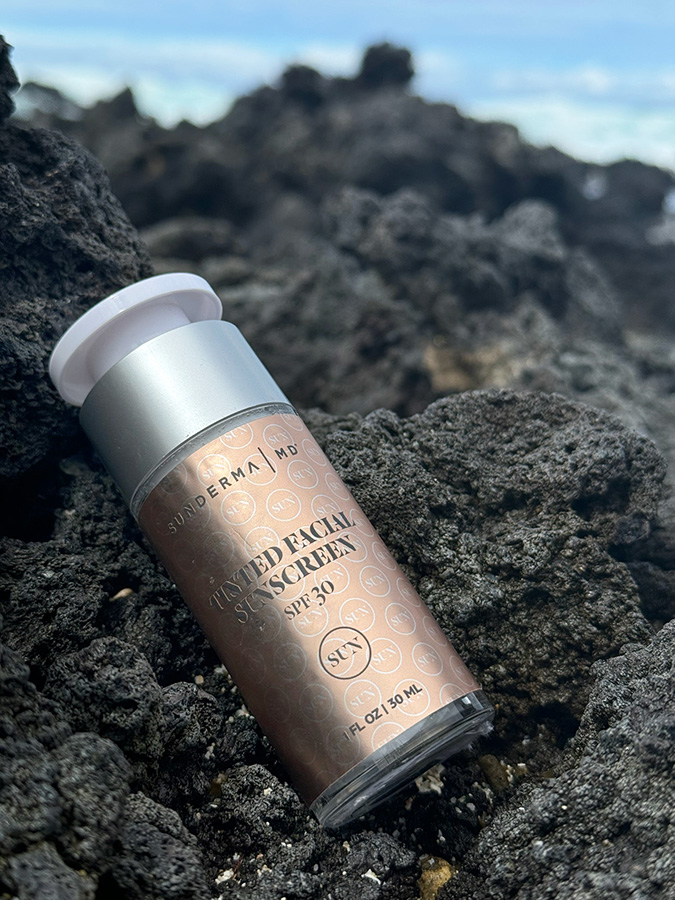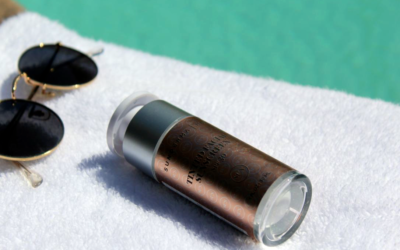Protect Your Assets from the Summer Sun
Sunscreen: Understanding the basics
With summer just around the corner, conversations about sun protection inevitably take center stage. Sunscreen, an essential component of skin care, plays a critical role in protecting our skin from harmful UV rays. This guide dives into the essentials of sunscreen use, its benefits, proper application, and the long-term effects on skin health; plus, we’re excited to introduce Inderma’s new tinted facial sunscreen, designed to offer superior protection with a flawless finish!
Sunscreen is a topical product that helps protect the skin from the sun’s ultraviolet (UV) radiation. There are two main types of UV rays: UVA and UVB. UVA rays penetrate deep into the skin, causing premature aging and wrinkling, while UVB rays are responsible for sunburn. Overexposure to both can lead to skin cancer, making it important to do everything in our power to protect ourselves from these harmful rays.
When it comes to topical sunscreen, there are two types of sunscreen, mineral and chemical sunscreen. Mineral sunscreens contain active mineral ingredients such as zinc oxide or titanium dioxide, which sit on top of the skin to physically block or reflect UV rays. On the other hand, chemical sunscreen contains organic (carbon-based) compounds like oxybenzone, avobenzone, and octinoxate, which absorb UV radiation and convert it to heat, which is then released from the skin. Inderma® Tinted Facial sunscreen is a tinted, mineral sunscreen that reflects UV rays off the skin while leaving a radiant, tinted finish.
Another factor that comes into play when selecting your sunscreen is SPF, short for Sun Protection Factor, this measures how well the sunscreen protects against UVA and UVB rays. To protect against UVB, a product must have SPF claims. However, consumers should keep in mind that SPF does not guard against UVA — so an SPF claim will not protect the skin from 95% of all UV radiation. To effectively protect the skin, dermatologists recommend the regular application of a broad-spectrum sunscreen with SPF 30 or higher.
“Broad-spectrum” is a term coined by the FDA and used in the United States to identify sun care products that provide UVA protection that is proportional to the UVB protection indicated by the SPF number. An SPF 15 sunscreen blocks 93% of UV radiation while an SPF 30 blocks approximately 97%. With a broad spectrum, mineral sunscreen like Sunderma™ SPF 30, Zinc and other ingredients protect against UV rays while keeping your skin moisturized without any of the extra oil. Like all sunscreens, correct application and reapplication are the only way to guarantee lasting protection. Finding a 30+ SPF, broad spectrum, sunscreen is essential to skin protection, especially in delicate areas such as the face and chest.
You may be asking, what about a sunscreen being waterproof, does that matter? While waterproof SPF options may seem ideal, they simply aren’t possible. According to the FDA, like any other topical skin product, sunscreen will eventually wash off in water, thus they are not waterproof. Many mineral, broad spectrum sunscreens are water resistant and contain ingredients to resist removal in various conditions, but still need to be reapplied regularly throughout the day. Contrary to popular belief, no sunscreen is waterproof and the only way to ensure optimal sun protection is to reapply sunscreen products frequently. This leaves you with three deciding factors when choosing a sunscreen with the most benefits, mineral, broad spectrum, and SPF 30 or higher.
Usage, application, and other considerations
Sunscreen is a vital component of any skincare routine, providing essential protection against the harmful effects of ultraviolet (UV) radiation, to maximize its effectiveness, it’s important to
choose a broad-spectrum sunscreen that guards against UV rays with an SPF of at least 30. Sunscreen and SPF products only work when they are used and applied properly. Sunscreen should be applied generously to all exposed skin areas 15 to 30 minutes before sun exposure to allow it to fully absorb. Reapplication is equally as important, needed every 1-2 hours or immediately after swimming, sweating, or towel drying. Even on cloudy days and during winter months, UV rays penetrate through clouds and reflect off snow, making daily sunscreen a year-round necessity.
Beyond the basics of choosing and applying sunscreen, there are additional considerations to enhance its effectiveness and ensure comprehensive sun protection. For those with sensitive skin or specific conditions like acne, selecting a sunscreen that is non-comedogenic, fragrance-free, and hypoallergenic can help prevent adverse reactions. Sunderma™ Tinted Facial Sunscreen was created to support your skin protection needs while providing healthy, non comedogenic ingredients and a subtle tint, giving a beautiful finish without irritation. Combining these strategies with diligent sunscreen use can significantly reduce the risk of skin cancer and signs of premature aging.
Sunderma™ Tinted Facial Sunscreen

Sunderma™ Tinted Facial Sunscreen was created to provide the perfect day-to-day SPF solution, as well as a non-comedogenic formula that is safe to apply to skin 24 hours after microneedling procedures.
With a non-scented, tinted, moisturizing formulation, Sunderma provides protection as well as a gorgeous finish to the skin.
